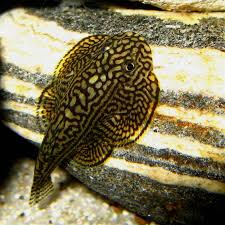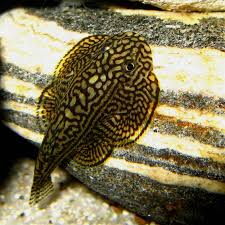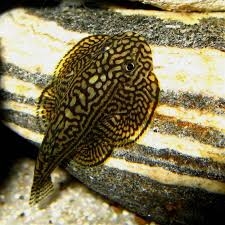Loach-Tiger Hillstream
Loach-Tiger Hillstream
check_circle Fast Shipping
check_circle Quality Products
check_circle Affordable Price
Reach out to us on ''available to order'' items via WhatsApp or email
24 in stock
Couldn't load pickup availability

Loach-Tiger Hillstream
package_2
Product Description
Product Description
All our fish, shrimp and corals are bagged with fresh oxygen as well as a heat pack in winter.
When ordering livestock please select the box size and add it to your cart for accurate overnight (1-2 days) shipping costs. A small box can take 1-2 bags and a medium box 6 bags. One bag fits max 10 small (1-3cm) fish or max 2 medium (3-5cm) fish or max 1 large (>5cm) fish.
ONE SPECIES PER BAG. Eg: One bag of 10 neon tetra.
Hillstream Loach (Gastromyzon spp.)
Description:
-
Appearance:
- Body: Flattened, with a broad and disc-like body adapted for clinging to surfaces.
- Color: Typically light to dark brown or grey with mottled patterns and spots, providing camouflage against rocky substrates.
- Fins: Small, rounded fins adapted for strong current; dorsal and pectoral fins are prominent and wide.
- Size: Usually grows up to 2.5-4 inches (6-10 cm) in length.
- Distinctive Feature: Their unique, flattened body shape and ability to cling to surfaces make them distinctive. They often have a sucker-like mouth adapted for feeding on algae and detritus.
-
Behavior:
- Activity: Active and prefers strong water currents, mimicking their natural fast-flowing stream habitat.
- Social Structure: Typically peaceful and can be kept in groups. They are more active and comfortable in schools.
Care Requirements:
-
Tank Size:
- Minimum: 20 gallons (75 liters). A larger tank with a strong filtration system is preferable to replicate their natural environment.
-
Water Parameters:
- Temperature: 72-78°F (22-26°C). They prefer slightly cooler temperatures typical of their native streams.
- pH: 6.5-7.5. They thrive in slightly acidic to neutral water.
- Hardness: Soft to moderately hard water.
- Filtration: Strong filtration is crucial. They thrive in tanks with high water flow, mimicking their natural fast-moving stream habitats.
-
Tank Setup:
- Substrate: Prefer a substrate of smooth gravel or small rocks. They need a rough surface to cling to and explore.
- Aquascaping: Provide plenty of rocks, driftwood, and other surfaces for climbing. Live plants are beneficial but should be anchored securely.
- Lighting: Moderate lighting. They are not particularly sensitive to lighting, but a well-lit tank can help maintain plant health.
-
Diet:
- Primary Food: Omnivorous. They feed on algae, detritus, and small invertebrates. High-quality algae wafers, sinking pellets, and small live or frozen foods like bloodworms and brine shrimp are suitable.
- Supplemental Food: Offer occasional treats such as blanched vegetables (e.g., zucchini, spinach) and spirulina-based foods.
-
Behavioral Considerations:
- Compatibility: Peaceful with other non-aggressive fish. Avoid keeping with larger or aggressive species that may harass them.
- Social Behavior: Best kept in small groups of at least 3-6 individuals to promote natural behavior and reduce stress.
-
Tank Maintenance:
- Water Changes: Regular water changes (20-30% weekly) are essential to maintain water quality and remove waste.
- Cleaning: Clean the tank regularly, especially the filter, to ensure proper water flow and to prevent the buildup of organic matter.
-
Health Care:
- Observation: Monitor for signs of stress or illness, such as changes in behavior, loss of appetite, or visible symptoms like unusual coloration or lesions.
- Treatment: Maintain optimal water conditions and consult an aquarium professional if health issues arise. Common problems include skin infections, parasites, and issues related to poor water quality.


